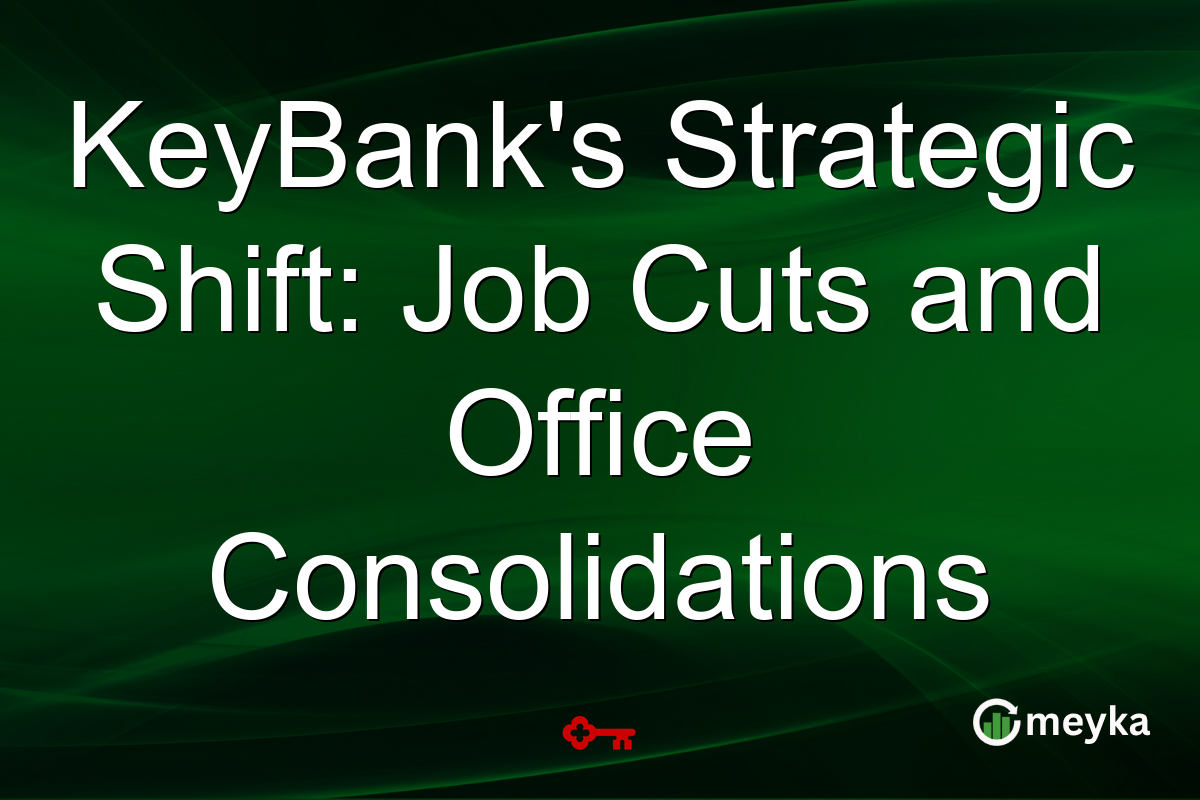KeyBank’s Strategic Shift: Job Cuts and Office Consolidations
Today, KeyBank, a subsidiary of KeyCorp, has unveiled a significant cost-cutting strategy involving widespread job cuts and office consolidations. This move is aimed at bolstering profitability in a challenging banking environment. The announcement has sent ripples through the industry and captured the attention of investors keen on market movements concerning KeyBank job cuts in 2025. According to data, the bank’s steps are in response to pressures to adapt swiftly to changing banking practices.
The Scope of KeyBank’s Restructuring
KeyBank’s decision to implement massive job cuts and office consolidations marks a pivotal moment for the organization. The bank will reduce its workforce significantly, intending to streamline operations and cut costs. This strategic shift is expected to affect thousands of employees. According to reports, the bank will also shut down or merge several of its office locations to optimize real estate expenses. The move is not entirely unexpected amid industry-wide trends demanding efficiency and cost reduction from financial institutions. As digital banking becomes more prevalent, physical branch networks often see decreased foot traffic. KeyBank, along with other banks, is responding to these industry shifts by trimming down its physical presence. The changes are crucial for maintaining competitiveness in an increasingly digital landscape.
Financial Implications and Market Performance
KeyBank’s restructuring has sparked heightened market interest. The bank’s stock, represented by KEY, recently noted a price of $19.18, reflecting a day change of +1.21%. However, over the past three months, KEY has experienced a decline of 17.88%, indicative of ongoing market volatility. Analysts offer mixed ratings on KeyBank’s future. While some suggest a “hold,” others recommend a “buy,” with a consensus rating of 3.00. The target price for KEY varies, with a consensus of $18.22, depicting diverse expectations.
Adapting to Shifting Banking Habits
The restructuring by KeyBank is also a clear reflection of shifting consumer habits. As customers increasingly prefer digital to physical banking, traditional banks must evolve. The closure and consolidation of branches allow KeyBank to allocate more resources towards enhancing its digital platforms. KeyBank is not alone in this transition. Many regional banks are making similar moves to remain relevant. This approach helps reduce operational costs while driving investments in technology innovations. By cutting costs through office redundancies, KeyBank aims to reinvest in areas that promise long-term growth. According to insights from Bloomberg, such transformations are vital for meeting modern financial service demands.
Investor Considerations and Future Prospects
For investors, the changes at KeyBank present both challenges and opportunities. The bank has marked its presence amid the ups and downs of financial metrics, highlighting the volatility in this sector. KeyBank’s market cap stands at $21.05 billion, and its earnings per share currently at -$0.08 reflect the turnaround needs. The forecasts show a mixed outlook, with short-term projections suggesting declines but long-term speculation hinting at a recovery. The yearly target for KEY is slightly above $21, insinuating potential long-term gains. Moreover, a CNBC report suggests these strategies are crucial for sustaining future growth. As KeyBank moves towards reducing its physical footprint while bolstering online presence, investors should watch for both immediate impacts and future growth signals.
Final Thoughts
KeyBank’s decision to enact major job cuts and office consolidations underscores the significant shifts within the banking sector, driven by the need to adapt to digital advancements. While the short-term effects on investors and employees may be challenging, these moves position KeyBank for potential long-term success. As highlighted by resources like Meyka, following these market dynamics is crucial for informed investment decisions, enabling investors to navigate such transformations with real-time insights and analytics.
FAQs
KeyBank is reducing jobs and consolidating offices as part of a cost-cutting strategy to improve profitability and adapt to digital banking trends, necessitated by shifts in consumer behavior.
KeyBank’s stock has experienced varying levels of volatility, with a recent day change showing an increase of 1.21%. Over the past three months, it has faced a decline of around 17.88%.
While the restructuring poses short-term challenges, it’s aimed at positioning KeyBank for potential long-term growth by enhancing digital capabilities and optimizing costs.
Disclaimer:
This is for information only, not financial advice. Always do your research.






